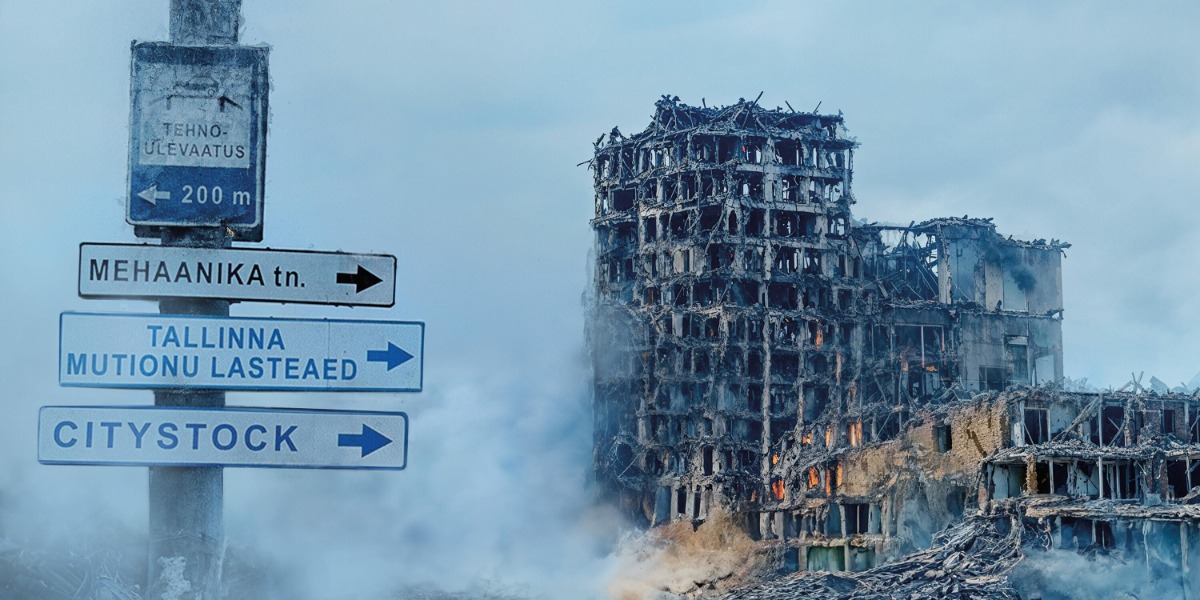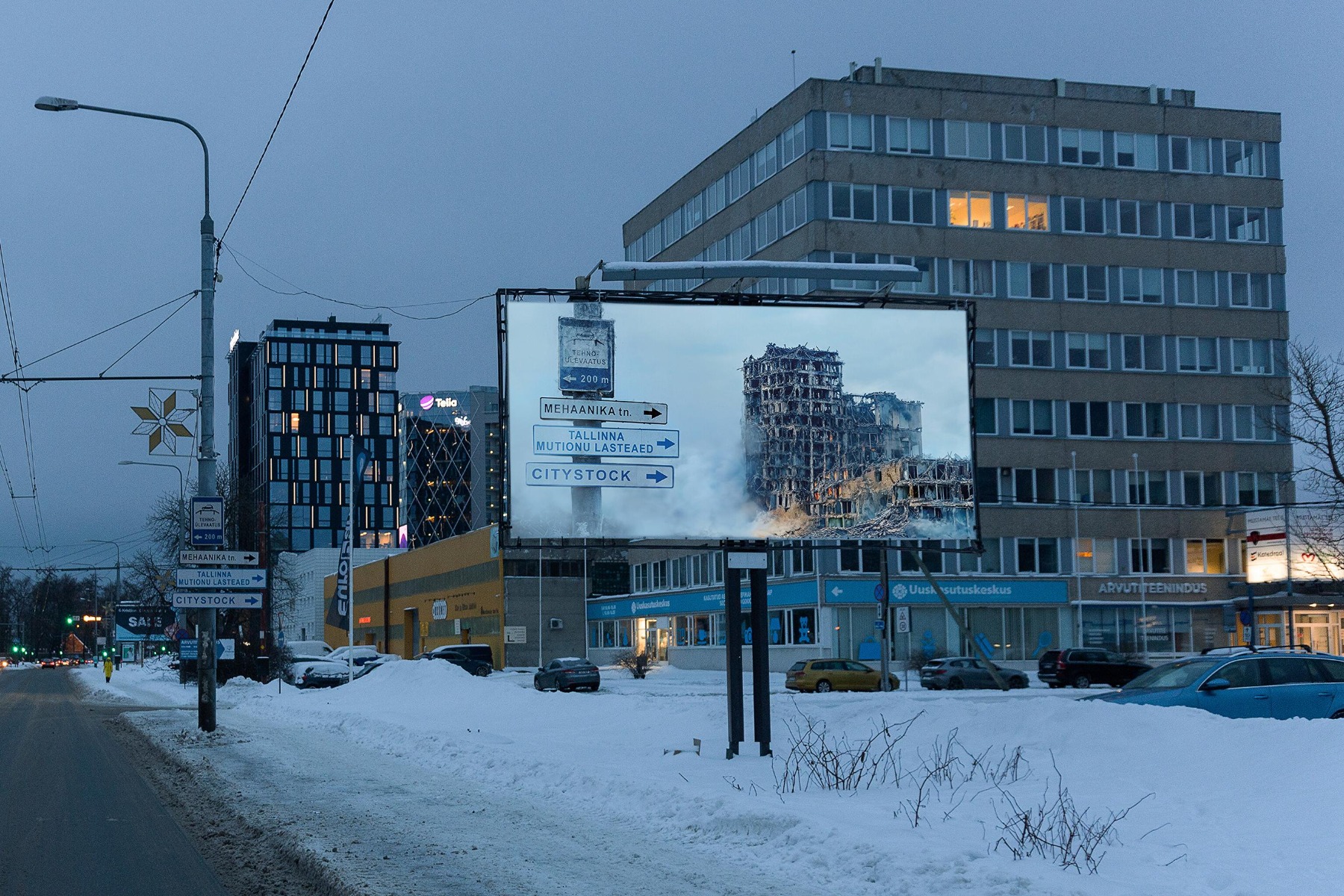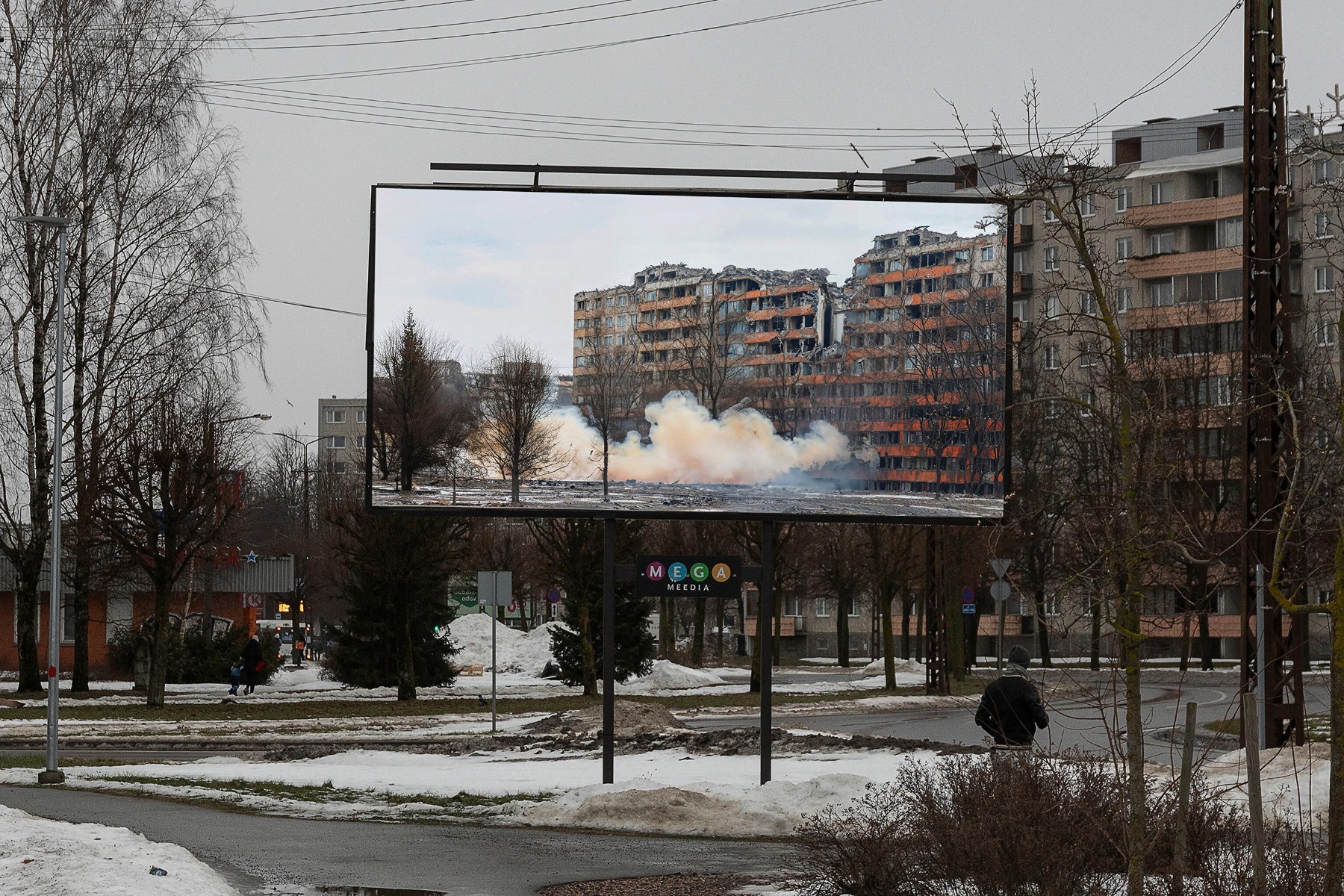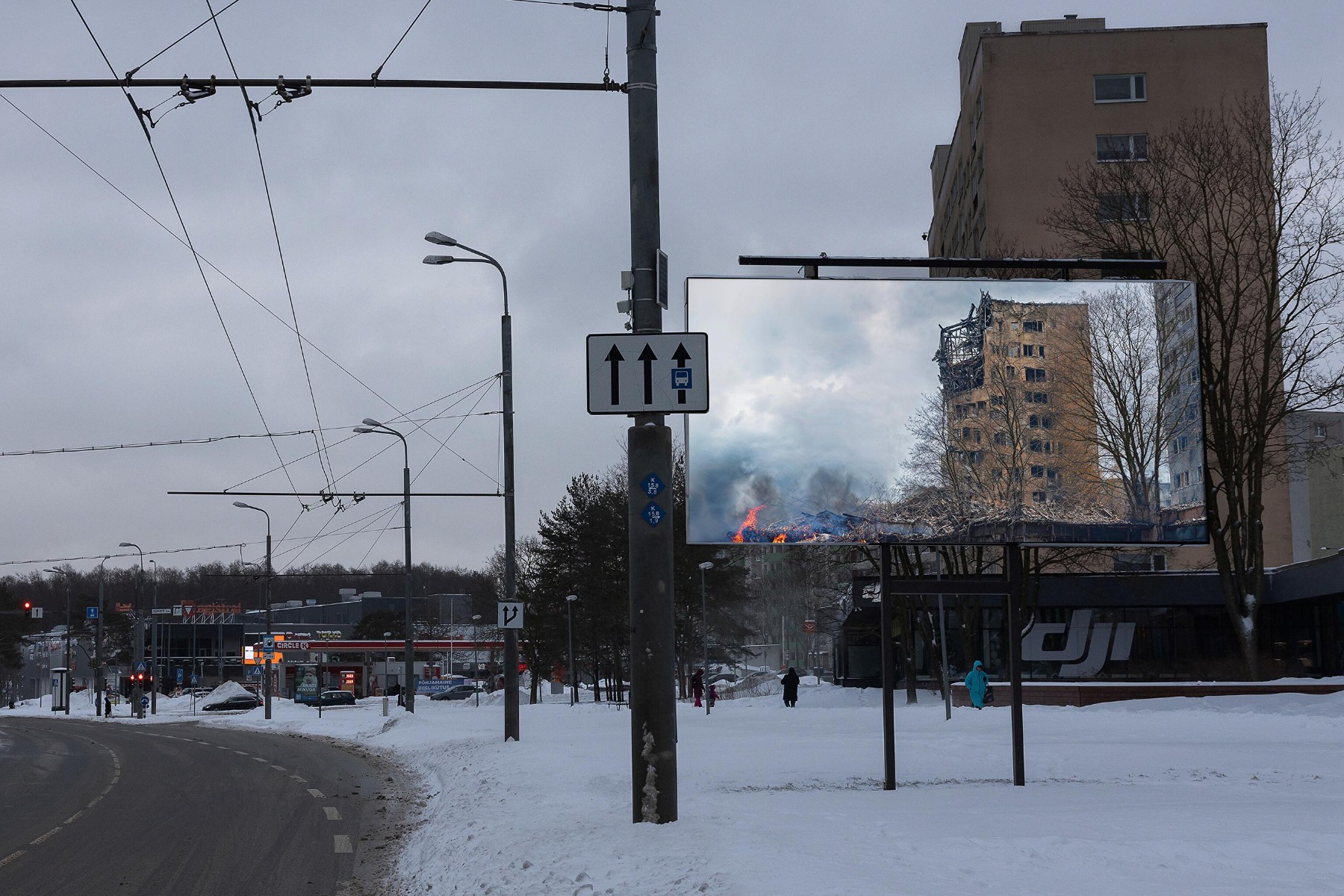
The fragile "Moment"
It was April 7th, 2022, and Russia’s full-scale invasion of Ukraine had been ongoing for a month and a half. I had my first trip during this time - to Tallinn for a book presentation. And I distinctly remember the feeling - upon arrival, I walked from the bus station to the Old Town and constantly felt the fragility of everything: lives, buildings, routines. Mothers leisurely strolled with strollers, elderly ladies visited cafes, schoolchildren hurried home after classes.The sounds were there, but they were notably subdued, even the passing cars almost rustled by. There was peace.
But very, very fragile.
Photo: hetk.info
Now, two years have passed since February 24, 2022. We, the residents of the Baltic States, still live in peace, while the war in Ukraine has become one of the constants of the news background. We have gotten used to not being surprised. Accustomed to the pressure of terrifying news and our own fears. And it is precisely now in Tallinn that artists have decided to remind us that there is peace in this city, perhaps precisely because there is war not so far away and the aggressor is stuck there.
This project is called "Hetk" (Moment) and it was conceived and created by artists Rebekka Parbus and Estookin. They attempted to imagine how three districts of Tallinn, with their multi-story buildings, residential houses, and supermarkets, would look if they experienced what happened to Mariupol and other Ukrainian cities. The images depict real houses, and the visualizations of demolition are exhibited on huge billboards right next to their 'prototypes.' They will stay there from February 19th to March 3rd.
Photo: hetk.info
Photo: hetk.info
"These works reflect views we do not see in our own cityscapes. How much do we appreciate those moments when all is well?" Estookin said, explaining the exhibition's context.
"Thinking about how unstable our world is at the moment, I realized that I had taken everything around me for granted. From being free and independent to having food on the table and a roof over our heads. There's a lot to be thankful for. The exhibition provokes a discussion on issues that are much broader than the artworks themselves. We were prepared for various reactions; all feelings are justified," Parbus added.
Photo: hetk.info
The feelings and reactions are indeed varied. Many speak of the validity of such an action, of the need to remind people of what is happening. Others question the location of the billboards - the Õismäe, Mustamäe, and Lasnamäe districts, where the percentage of Russian-speaking population is relatively high. It could be argued that the visually most convincing match with the images and snapshots we see in the news is the visually destroyed high-rise buildings. Maria Kapajeva, an artist who is a participant in the Tallinn art community, discusses this in an article published on rus.postimees.ee: "This visualization, in my opinion, no longer works. We are used to images of destroyed buildings in the media. Yes, here is a house that you know, see, live nearby or in it. But that's why the maximum that such a photo can do is increase your personal fear of the future. Yes, we have a percentage of people who do not support Ukraine. But I'm not sure that the pictures can change their worldview. It's been two years since they've been watching media photos of destroyed buildings, but they remain in conflict with those who condemn Russia. You have to talk to them, no matter how pointless it may seem, and shock visual therapy is a thing of the past. It won't get them. And another thing. Estonia gives Ukraine the largest percentage of its state budget compared to other European countries. If such shock therapy is to be done, it should not be in Tallinn, but in Berlin or Paris. In countries that support Ukraine much less, although they have much more opportunities for this."
Photo: hetk.info
And the portal news.err.ee publishes the opinion of Tallinn Deputy Mayor Kaarel Oja: "Hetk" is effective and for that reason alone it is a success. It has also been brilliantly executed. A prime example of the application of the maxim "less is more." One neat idea, a few visuals, and a couple of rather general, but still clear, guiding sentences from the authors. Beneath this apparent simplicity and purity, however, there are some strong contradictions. Very different interpretations are possible, and absolutely opposite emotions. It is effective, it is successful. For some, it is a shock. For others, a warning and a wake-up call. For some, pain. For many, it is certainly mobilizing. That is what we need to discuss, and can be debated. Attempts to impose the "correct" interpretation, however, miss the mark. As do judgments of the "like" or "dislike" variety, the more bizarre of which stray into the maze of "must not" or "must" viewpoints. The most bizarre interpretations are those suggesting someone else's interpretation is "wrong." I like "Hetk," but I also don't like it at all. We think these posters are very important and at the same time we wish they weren't. They scare me, but they also trigger me. And it is this that makes "Hetk" a powerful work of art, in a category beyond simple propaganda. Paradoxically, it seems to me at the same time both inappropriate to say that there should not be this exhibition, and also inappropriate to say that such a view should not be expressed."
Photo: hetk.info
Yes, it's a contradictory project, but it seems to hit the mark nonetheless. It strikes directly at our fears, at the global reality, at the necessity of supporting Ukraine not just for the sake of justice. Right now, "Hetk" is making its way through global news, and it's not surprising that it's getting the most citations in Ukrainian media.
We live in a fragile world, and artists can remind us of this fact – even on huge billboards in urban neighborhoods.